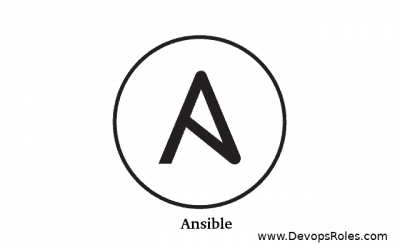Table of Contents
Introduction
In the world of IT automation and DevOps, Ansible stands out as a powerful tool for configuration management and infrastructure automation. However, managing complex configurations across multiple systems can be challenging. This is where Ansible Roles come into play.
Ansible Roles provide a structured and modular approach to automation, making it easier to organize and reuse tasks across different projects. This guide will walk you through everything you need to know about Ansible Roles, from basic concepts to advanced implementations.
What Are Ansible Roles?
Understanding Ansible Roles
Ansible Roles allow users to break down complex playbooks into reusable components, improving maintainability and scalability. Instead of writing long playbooks, roles help you organize tasks, variables, handlers, and other elements into separate directories.
Key Benefits of Ansible Roles
- Modularity: Encourages code reuse and simplifies complex configurations.
- Scalability: Easily apply configurations to multiple servers.
- Maintainability: Organized structure improves readability and management.
- Community Support: Ansible Galaxy provides pre-built roles for common use cases.
Ansible Roles Directory Structure
Ansible Roles follow a standard directory structure:
my_role/
├── defaults/ # Default variables
├── files/ # Static files to be copied
├── handlers/ # Handlers for service restarts
├── meta/ # Role metadata (dependencies, author, etc.)
├── tasks/ # Main task definitions
├── templates/ # Jinja2 templates
├── vars/ # Role-specific variables
└── README.md # Documentation for the roleExplanation of Each Directory:
- defaults/ → Defines default variables that can be overridden.
- files/ → Contains static files to be transferred to managed nodes.
- handlers/ → Includes tasks that respond to events (e.g., restarting a service).
- meta/ → Stores role metadata, dependencies, and author details.
- tasks/ → Lists the automation steps that the role performs.
- templates/ → Contains Jinja2 templates for dynamic configurations.
- vars/ → Stores variables specific to the role.
Creating and Using Ansible Roles
1. Creating an Ansible Role
To create a new role, use the following command:
ansible-galaxy init my_roleThis command generates the standard directory structure for your role.
2. Using a Role in a Playbook
Once the role is created, it can be included in an Ansible Playbook:
---
- name: Deploy Web Server
hosts: web_servers
roles:
- webserver3. Installing Roles from Ansible Galaxy
Ansible Galaxy provides a repository of community-created roles. To install a role:
ansible-galaxy install geerlingguy.apacheUse the installed role in your playbook:
---
- name: Install Apache
hosts: web_servers
roles:
- geerlingguy.apacheAdvanced Use Cases
1. Using Variables in Roles
Variables make roles more flexible. Define variables in the vars/main.yml file:
apache_port: 8080Reference the variable in a template:
Listen {{ apache_port }}2. Role Dependencies
Define role dependencies in meta/main.yml:
---
dependencies:
- role: common_packages
- role: security_updates3. Conditional Role Execution
Use when conditions to control role execution:
- name: Include webserver role only on Ubuntu
include_role:
name: webserver
when: ansible_os_family == "Debian"Frequently Asked Questions (FAQ)
1. What is the difference between Ansible Playbooks and Roles?
Playbooks define automation workflows, while Roles break down tasks into reusable components for better organization and modularity.
2. Can I use multiple roles in a single playbook?
Yes, multiple roles can be included in a playbook, and they will execute sequentially.
roles:
- security_updates
- webserver
- database_server3. How can I override default variables in a role?
Override variables by defining them in the playbook:
vars:
apache_port: 90904. Are there any best practices for creating Ansible Roles?
- Follow the standard directory structure.
- Keep tasks modular and reusable.
- Use variables for flexibility.
- Document roles using
README.md. - Test roles before deploying.

External Resources
Conclusion
Ansible Roles are an essential feature that enhances the modularity, reusability, and maintainability of Ansible Playbooks. By leveraging roles, organizations can simplify complex configurations and achieve efficient automation. Whether you’re a beginner or an advanced user, mastering Ansible Roles can greatly improve your DevOps workflows.
Start implementing Ansible Roles today and optimize your infrastructure automation! Thank you for reading the DevopsRoles page!

